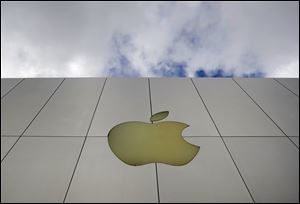
Apple signals emerging-market rethink with India push
2/25/2013
More than four years after it started selling iPhones in India, Apple Inc. is now aggressively pushing the iconic device through instalment payment plans that make it more affordable, a new distribution model and heavy marketing blitz.
NEW DELHI/BANGALORE — As BlackBerry launches the first smartphone from its make-or-break BB10 line in India, one of its most loyal markets, the company faces new competition from a formidable rival that has long had a minimal presence in the country.
More than four years after it started selling iPhones in India, Apple Inc. is now aggressively pushing the iconic device through installment payment plans that make it more affordable, a new distribution model and heavy marketing blitz.
“Now your dream phone” at $93, read a recent full front-page ad for an iPhone 5 in the Times of India, referring to the initial payment on a phone priced at $840, or almost two months’ wages for an entry-level software engineer.
The new-found interest in India suggests a subtle strategy shift for Apple, which has moved tentatively in emerging markets and has allowed rivals such as Samsung and Blackberry to dominate with more affordable smartphones. With the exception of China, all of its Apple stores are in advanced economies.
Apple expanded its India sales effort in the latter half of 2012 by adding two distributors. Previously it sold iPhones only through a few carriers and stores it calls premium resellers.
The result: iPhone shipments to India between October and December nearly tripled to 250,000 units from 90,000 in the previous quarter, according to an estimate by Jessica Kwee, a Singapore-based analyst at consultancy Canalys.
At The MobileStore, an Indian chain owned by the Essar conglomerate, which says it sells 15 percent of iPhones in the country, iPhone sales tripled between December and January, thanks to a monthly payment scheme launched last month.
“Most people in India can’t afford a dollar-priced phone when the salaries in India are rupee salaries. But the desire is the same,” said Himanshu Chakrawarti, its chief executive.
Apple, the distributors, retailers and banks share the advertising and interest cost of the marketing push, according to Chakrawarti. Carriers like Bharti Airtel Ltd, which also sell the iPhone 5, run separate ads.
India is the world’s No. 2 cellphone market by users, but most Indians can’t afford fancy handsets. Smart phones account for just a tenth of total phone sales. In India, 95 percent of cellphone users have prepaid accounts without a fixed contract. Unlike in the United States, carriers do not subsidise handsets.
Within the smart phone segment, Apple’s Indian market share last quarter was just 5 percent, according to Canalys, meaning its overall penetration is tiny.
Still, industry research firm IDC expects the Indian smartphone market to grow more than five times from about 19 million units last year to 108 million in 2016, which presents a big opportunity.
Samsung Electronics dominates Indian smartphone sales with a 40 percent share, thanks to its wide portfolio of Android devices priced as low as $110. The market has also been flooded by cheaper Android phones from local brands such as Micromax and Lava.
Most smart phones sold in India are much cheaper than the iPhone, said Gartner analyst Anshul Gupta.
“Where the masses are — there, Apple still has a gap.”